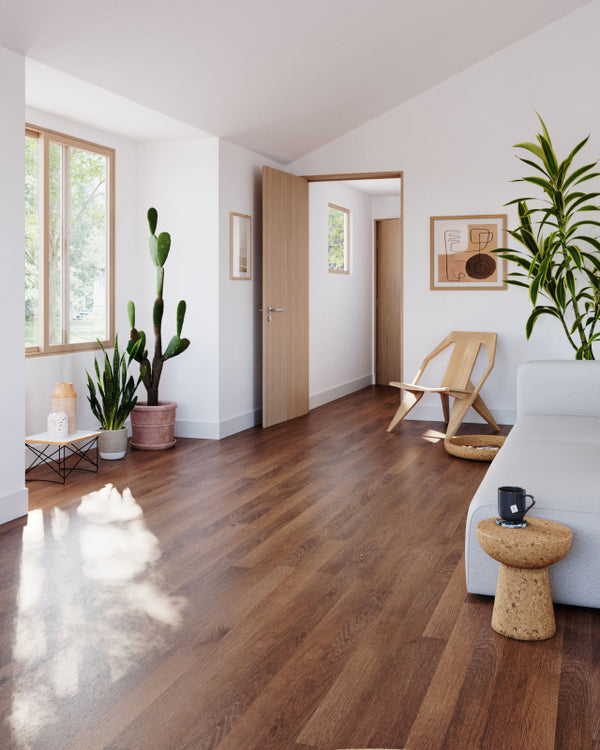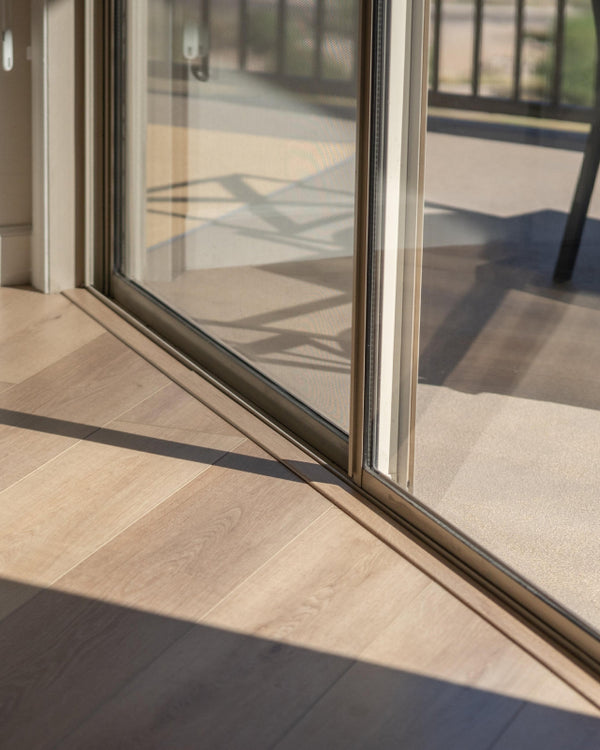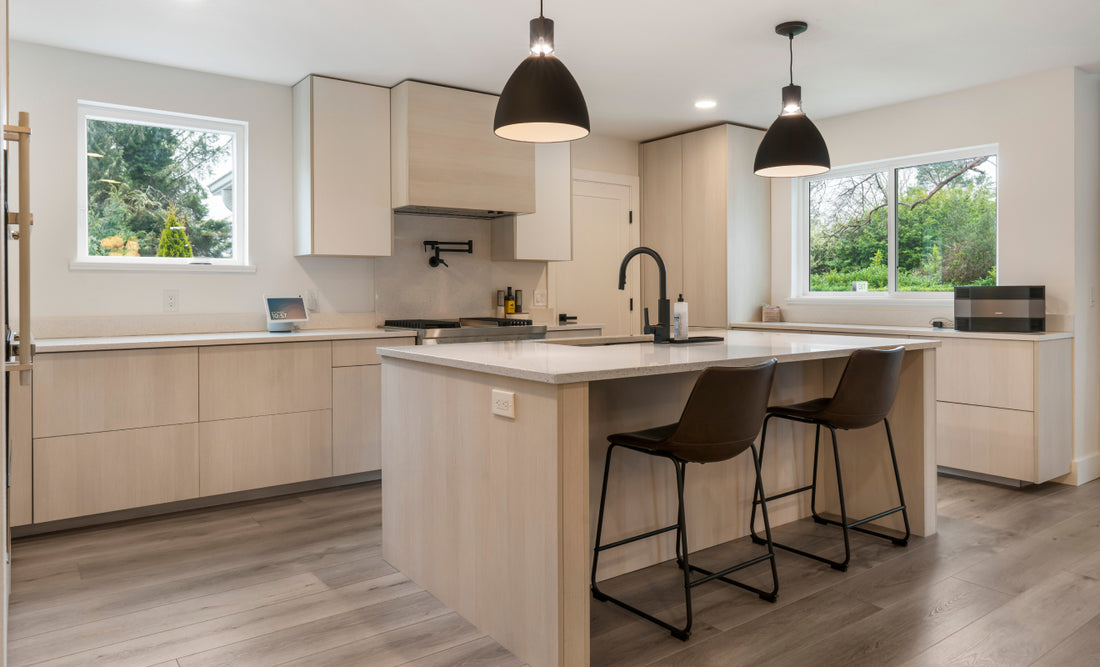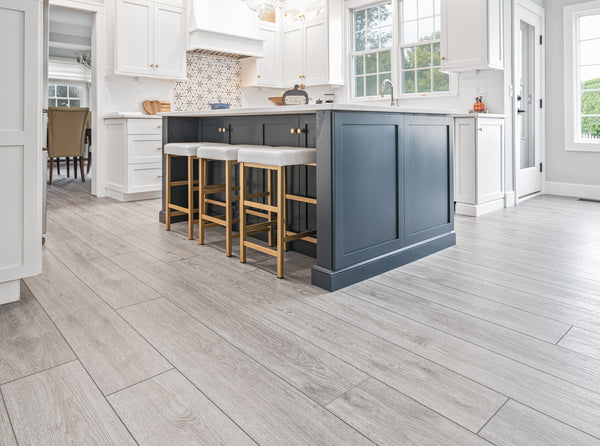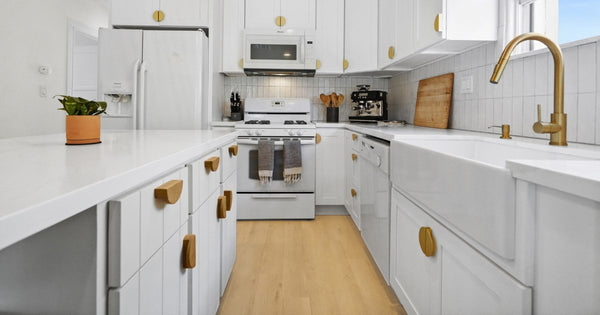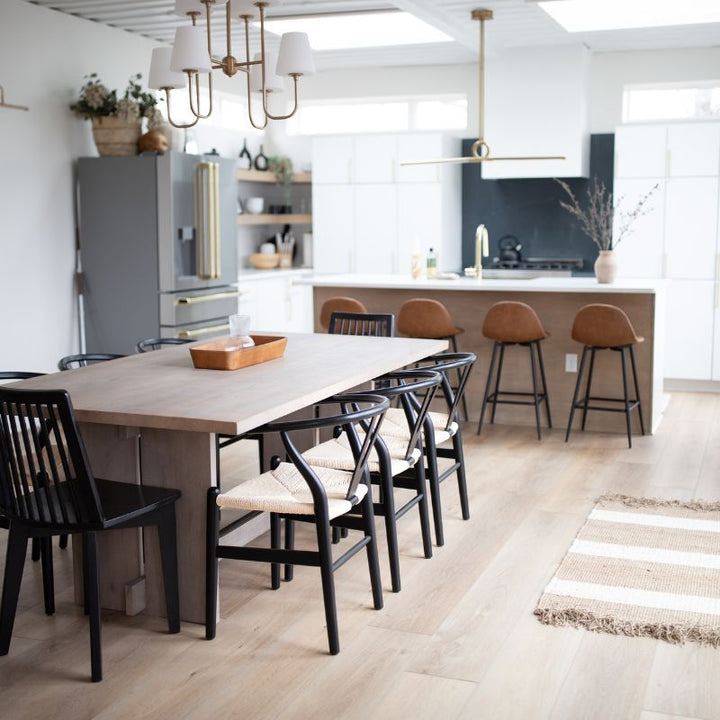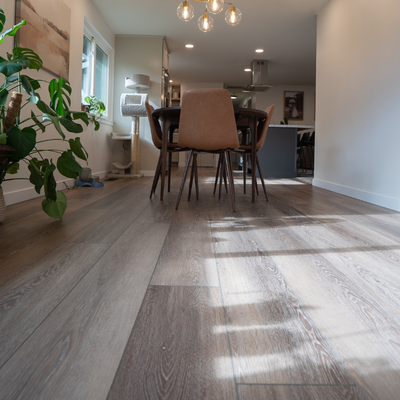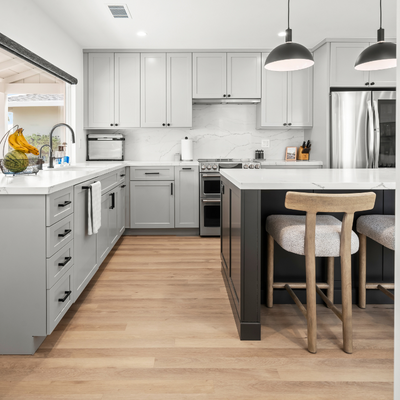Samples are the unsung heroes of the decision-making process, especially when it comes to flooring. They offer invaluable insights into how different materials will look and feel in your space. We've compiled some handy tips and tricks to help you get the most out of testing your flooring samples and ensure you feel confident in your decision.

Featured: Samples of the Modin LVP Collection
As you begin to lay out your samples, you'll quickly notice how one color, design, and texture can vary drastically from room to room. This variation is a testament to the nuances of interior design, where factors like lighting, paint tones, and furniture styles all influence how flooring integrates into your environment. It's not uncommon to be drawn to a certain flooring color, only to change our minds when we see it in the context of our home.
Feeling overwhelmed by the decision-making process is understandable, especially if interior design isn't your forte. We're here to simplify things with expert advice tailored to help you find the perfect flooring for your unique space.
Tip # 1: Look at your samples in different lighting
Looking at your samples in different lighting conditions will help you get a more general sense of color and tone.

Featured: Silvan Engineered Hardwood Collection
Here’s why: Light sources with higher color temperatures, like daylight or cool white fluorescent lamps, give off a bluish-white light. Conversely, light sources with lower color temperatures, such as incandescent bulbs, emit a warm, yellowish glow. This affects every color in your space, including your flooring. Warm lighting can bring out those inviting yellow or orange tones, while cooler lighting might highlight some soothing blue hues.
To get a feel for how this works, just check out a white sheet of paper at different times of the day. Notice how it takes on that golden-yellow hue during sunrise and sunset? That's the magic of light temperature at play.

Featured: Palka Signature from the Modin LVP Collection
Test it out: Grab your flooring samples and try them out in different rooms at various times of day, with the lights on and off, and with blinds open and closed. Or, simply place them near the windows in a room and observe the samples as daylight changes.
Tip #2: Curate a mood board
Once you have your samples in hand, a great way to bring your vision to life is by creating a mood board to make sure you’re on track to achieve the look and feel you’re going for in your space. Are you going for something dark and moody, coastal, modern, boho chic? Mood boards help us visualize the ways different floors, paint colors, fabric, and textures will complement each other, and ultimately if they communicate the look we’re going for.

Featured: Palka Signature from the Modin LVP Collection
Here’s why: Mood boards are essential for interior designers to convey concepts to clients and ensure everyone is on the same page. By creating one yourself, you can see your design start to come to life and make sure your vision is translating effectively.
Test it out: Gather your fabric swatches, paint samples, and other elements you're considering. Lay them out with one flooring sample at a time to see how they complement each other. This hands-on approach will give you a clearer idea of how your vision will come together!

Featured: Tilden Signature from the Modin LVP Collection
If you’re looking for some inspiration, Flooret has curated mood boards for various colors and styles on our blog and short videos showing you how to create your own mood boards on YouTube.
Tip #3: Pairing paint colors and furniture
Before you make a decision, we recommend testing your samples against the paint colors and furniture in your space. If your space features bold design elements, opt for flooring with subtle patterns and colors to complement rather than compete. For a space with neutral tones and textures, you might consider opting for flooring with a high visual interest and more character.

Featured: Nakan Signature from the Modin LVP Collection
Here’s why: Flooring that clashes with other elements like countertops, backsplash, or furniture can disrupt the visual harmony of a room, resulting in a cluttered or imbalanced appearance.
Test it out: Curating a mood board is one way to test, or you can simply hold the samples next to the furnishings in your room and lay them up against the wall color to see how they work together.
A general rule of thumb is to find flooring with the same undertone as your furniture (warm, cool, etc.) and the opposite undertone of your wall color. Doing this creates a sense of balance and harmony in your space.

Featured: Soho Signature from the Modin LVP Collection
Confidence is key
By dedicating time to testing your samples and visualizing your space, you're ensuring that the flooring you choose is the perfect fit for you. Remember, while paint colors and furniture may change frequently, your floors are a lasting foundation in your home. Taking the time to find the right fit is an investment in your comfort and enjoyment for years to come.
If you have any questions about your samples along the way, our support team is always here to help!
